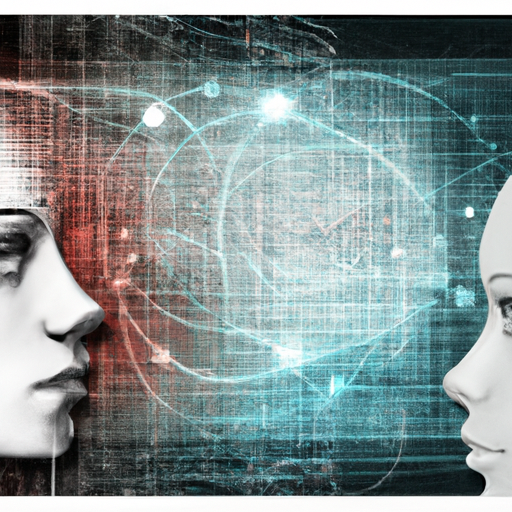Imagine a world where Artificial Intelligence (AI) is able to create groundbreaking innovations, solve complex problems, and even compose remarkable pieces of music or literature. While this may seem like a fascinating future, there is one significant challenge – AI cannot be copyrighted. In this article, we will explore the reasons behind this fascinating phenomenon and unravel the intricate relationship between AI and copyright laws. Discover why the realm of AI remains an elusive territory for intellectual property protection and how this impacts the future of innovation.
Why AI Cannot Be Copyrighted
What is AI?
Artificial Intelligence (AI) refers to the simulation of human intelligence in machines that are programmed to make decisions and perform tasks that usually require human intelligence. This field encompasses a wide range of technologies, including machine learning, natural language processing, image recognition, and robotics.
Understanding Copyright
Copyright is a legal protection that grants the creator of an original work exclusive rights over its use and distribution. It is a crucial tool for safeguarding intellectual property and encouraging creativity and innovation. However, when it comes to AI, copyright law faces several challenges.
The Nature of AI
AI possesses unique characteristics that make it difficult to fit within the traditional framework of copyright. Unlike traditional artistic works or written materials, AI is not the product of individual human creativity. Instead, it is a product of algorithms, data, and computational processes.
1. AI as a Tool
AI is often used as a tool by human creators to assist in the creation of works, such as generating music, creating artworks, or writing articles. In these instances, the AI is merely a tool or a means to an end, and the creative input and decision-making still primarily come from the human operator. Therefore, copyright protection would typically apply to the human creator, rather than the AI itself.
2. AI as a Compositional Process
In some cases, AI systems are programmed to autonomously generate works without human intervention. For example, AI algorithms can compose music or generate artwork independently. In these situations, copyright law encounters difficulties in determining authorship and ownership. Since AI lacks human consciousness and intentionality, it becomes challenging to attribute authorship or ownership to the AI system.
3. AI as a Collaborative Creation
AI technologies often involve collaborative efforts from multiple individuals, including software engineers, data scientists, and domain experts. This collaborative nature further blurs the lines of authorship and ownership. It becomes problematic to identify the specific contributions of each individual involved in the development of the AI system, making it challenging to assign copyright protection.
Legal Considerations
Several legal considerations add to the complexity of copyrighting AI-generated works.
4. Lack of Originality
Copyright protection requires a work to be original, which means it must exhibit a minimal level of creativity. However, AI systems operate by analyzing existing data and patterns, which raises questions about the originality of the output. AI-generated works are often based on pre-existing content, making it challenging to meet the originality requirement for copyright protection.
5. Authorship and Ownership
Copyright law assigns authorship and ownership to individuals who contribute creative and original elements to a work. As AI lacks conscious creativity and intentionality, it becomes difficult to identify a human author in the case of AI-generated works. Without a human author, copyright protection becomes elusive.
6. Copyright Protection Criteria
Copyright law typically requires works to be fixed in a tangible medium to be eligible for protection. However, AI-generated works are often ephemeral and continuously evolving, making it difficult to establish a fixed medium for copyright purposes. This criterion further complicates the application of copyright law to AI creations.
Technological and Practical Challenges
In addition to the legal considerations, there are several technological and practical challenges in copyrighting AI-generated works.
7. AI’s Constant Evolution
AI technologies are rapidly evolving, with continual updates and improvements. As AI systems learn and adapt from new data, the outputs they generate can change over time. This dynamic nature of AI makes it challenging to fix the expression of an AI-generated work, undermining the requirement for copyright protection.
8. Difficulty in Defining Boundaries
Defining the boundaries of an AI-generated work is inherently challenging. AI systems can incorporate multiple sources of data and generate outputs that may resemble or derive from existing works. Distinguishing between AI-generated works and infringing works becomes intricate, further complicating copyright enforcement.
9. Attribution and Plagiarism
AI-generated works often lack clear attributions, making it difficult to credit the original creators of the underlying data or algorithms. This lack of transparency raises concerns about plagiarism and misattribution within the AI community. Copyright law struggles to effectively address these challenges in the context of AI.
10. Infringement Detection
Detecting copyright infringement becomes more complex in the realm of AI. AI systems are capable of producing outputs that closely resemble existing copyrighted works. Distinguishing between genuine creation, fair use, or infringement becomes arduous, as AI may inadvertently generate works that replicate or mimic protected content.
Alternative Means of Protection
Given the limitations of copyright in the AI context, alternative means of protection have been explored.
11. Patenting AI
Patenting AI innovations provides a potential alternative to copyright protection. By seeking patent protection, inventors can safeguard the underlying algorithms or technological aspects of the AI system, rather than the outputs it generates. However, patent protection entails a different set of requirements and considerations, and it may not be suitable for all AI applications.
12. Trade Secrets and Confidentiality
Some AI developers choose to rely on trade secrets and confidentiality measures to protect their AI systems and the datasets used to train them. By maintaining secrecy and implementing robust security measures, companies can prevent unauthorized access and duplication of their AI technology.
Conclusion
In conclusion, AI presents unique challenges to the applicability of copyright law. The nature of AI as a tool, compositional process, and collaborative creation, coupled with legal, technological, and practical challenges, makes copyrighting AI-generated works difficult. As AI continues to evolve and create, exploring alternative means of protection such as patents, trade secrets, and confidentiality may be necessary to adequately safeguard the rights and interests of AI developers and creators.

